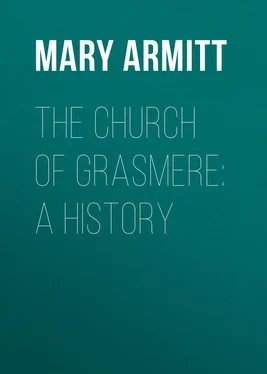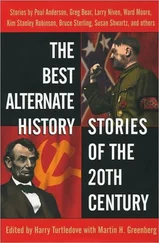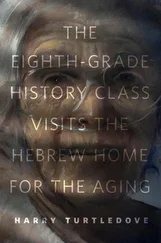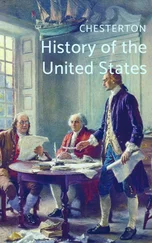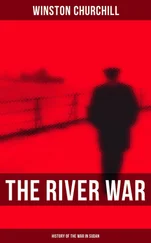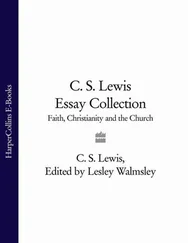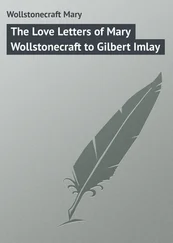Mary Armitt - The Church of Grasmere - A History
Здесь есть возможность читать онлайн «Mary Armitt - The Church of Grasmere - A History» — ознакомительный отрывок электронной книги совершенно бесплатно, а после прочтения отрывка купить полную версию. В некоторых случаях можно слушать аудио, скачать через торрент в формате fb2 и присутствует краткое содержание. ISBN: , Жанр: foreign_antique, foreign_prose, на английском языке. Описание произведения, (предисловие) а так же отзывы посетителей доступны на портале библиотеки ЛибКат.
- Название:The Church of Grasmere: A History
- Автор:
- Жанр:
- Год:неизвестен
- ISBN:http://www.gutenberg.org/ebooks/43002
- Рейтинг книги:4 / 5. Голосов: 1
-
Избранное:Добавить в избранное
- Отзывы:
-
Ваша оценка:
- 80
- 1
- 2
- 3
- 4
- 5
The Church of Grasmere: A History: краткое содержание, описание и аннотация
Предлагаем к чтению аннотацию, описание, краткое содержание или предисловие (зависит от того, что написал сам автор книги «The Church of Grasmere: A History»). Если вы не нашли необходимую информацию о книге — напишите в комментариях, мы постараемся отыскать её.
The Church of Grasmere: A History — читать онлайн ознакомительный отрывок
Ниже представлен текст книги, разбитый по страницам. Система сохранения места последней прочитанной страницы, позволяет с удобством читать онлайн бесплатно книгу «The Church of Grasmere: A History», без необходимости каждый раз заново искать на чём Вы остановились. Поставьте закладку, и сможете в любой момент перейти на страницу, на которой закончили чтение.
Интервал:
Закладка:
It is hard not to let conjecture play round this tradition of a change of site. Might it not actually have been made? Could it be connected with the turning of Grasmere into a manor, and with the parcelling out of a demesne in the valley? The barons of Kendal, of whom Ivo de Talbois was the first, possessed all these parts, from the time of Henry I. He and his successors governed by feudal methods, through agents. There was here no intermediary lord between baron and vassal; and the baron's officers – his bailiffs and his foresters – would be placed in secure houses or fenced lodges, whence they would control and govern. A demesne of Grasmere is mentioned on the death of William de Lindesay, 1233, and a manor and park in a charter of 1297. 24 24 Inquisition post mortem. Calendar Patent Rolls , 25 Edward I.
The woods sold by Henry the Eighth in 1544 were the residue of the lord's forest; he being the inheritor of the Fee.
Now we may reasonably suppose this demesne to have been planted in Kirktown, as the present village came to be called, where the meadows were rich and the soil deep for ploughing, but distant from, and below the ancient line of road with its scattered homesteads. The demesne made a village nucleus; for all the accessories of a manor house would spring up about it. We know the lord's brewery was not far off, at Kelbergh, where springs – beside the holy one – are still abundant. 25 25 The modern house built upon the knoll had a well within it, and behind the house – where a hidden runner gushes out by a rock – there are traces of old pavement.
In a rental, dated 1375 26 26 Levens Hall MSS.
that concerned the part of Grasmere then held by the Hotham and Pedwardyn families, it is stated that "Richard Smyth holds the forge and should render 12d and 1d," with the addition that he pays 2s 0d per annum for "Kelebergh." From another document we learn that certain tenants of Grasmere pay an unspecified sum for the brewery of Keldbergh.
This manorial centre was united to the high line of road on the other side of the valley by several ways. One, a footpath, still passes hard by Kirk How, a now disused smithy being upon it. Two others approach and meet to cross Raise Beck together by White Bridge, the name indicative of a stone fabric at a time when timber was commoner. Here the village pinfold still stands.
What more natural than that the church should be added to this central group, and at a time perhaps when enlarged space and entire rebuilding of an existing edifice required to be done? The site by the river would afford deep soil for burial. To such a change of site (supposing it were made) there would naturally be opposition from some quarter; whence the tradition.
This, however, is but conjecture. The fabric of the present church shows no feature that is of a certainty older than the introduction of manorial rule into Grasmere; while it may be as late as the fourteenth century. But before considering the question of its age, it will be well to point out other evidences of the existence of a church in the valley before record began, and then pass on to such scant records as time has left to us.
PART II
THE PARISH
BOUNDARIES
THE TOWNSHIPS
LEGAL ASPECTS OF THE CHURCH
THE EIGHTEEN
THE PARISH
The church of Grasmere is found when record begins, serving as the centre of a large and regularly constituted parish. The date of the creation of this parish is not known; but from the fact that its southern boundary runs by the Stock Beck – thus cutting the now thriving town of Ambleside into two parts, one of which belonged to Grasmere and the other to Windermere – there seems a probability of it having been delineated at an early period, when the sæter of some Norse settler was but an insignificant clearing in the forest.
Every parish is but a unit in a complex Church organization, which passes upwards by rural deanery, archdeaconry, to diocese. In historical evolution, there is a descent from the greater to the less; while each successive ecclesiastical demarcation followed as a rule some political line of kingdom or state. The diocese for instance was conterminous with the Anglo-Saxon kingdom; the parish represented the township, or the manor.
But in the vast kingdom of Northumbria the superposition of church boundaries upon state boundaries was not so simple a matter, and the subdivisions that took place are not easy to trace. Archbishop Theodore, when called in by King Egfrith (678) to portion his kingdom for purposes of church rule, made at least three bishoprics out of the one whose centre – after a removal to Lindisfarne – was fixed at York. 27 27 Bright's Early Church History , p. 291. Bishop Browne's Theodore and Wilfrith , pp. 132 and 690.
Next, the archdeaconries were marked out under Thomas, Archbishop of York, some time between 1070 and 1100. The archdeaconry of Richmondshire, lying in the mountainous region west of the old Anglian kingdom, was a great and peculiar province, and the archdeacon ruled over it with almost the powers of a bishop. 28 28 It may possibly represent an old sub-kingdom of Northumbria, and is suggestive of Edwin's conquest of a district to the north-west called by the Britons Teyrnllwg. See Rhys's Celtic Britain (quoted in "Rydal," Westmorland Gazette , May 2nd, 1903). It contained large portions at least of that great church province which Wilfrid made over to Ripon Minster, which was for a short time the seat of a bishop. The creation of Richmond as a centre was a late Norman measure.
The archdeaconry was divided again into rural deaneries, of which Kendal was one. This deanery embraced ten parishes, Grasmere being the westermost of them. It appears singular that this group of ten parishes lay in three different counties, – Yorkshire, Lancashire, and Westmorland; and from this circumstance it has been argued that here (as in our own parish) the ecclesiastical division was made prior to the political one of counties. This probably was so; and it is clear that the deanery represents in reality another political area, viz.: that of the barony of Kendal created by William Rufus. 29 29 Whitaker's History of Richmondshire . Dr. Wilson ( Victorian History of Cumberland ) gives 1120 to 1130 as dates between which Henry I. marked out the county divisions as fiscal areas. In the latter year the new county of Westmarieland was placed under the jurisdiction of a separate sheriff.
Kirkby Kendale, the caput of the barony, became from this period the official church centre. There the Synods and Archidiaconal Courts were held, and all dues were paid which the higher church authorities exacted from the parishes – Grasmere among them. 30 30 For the connection between mother churches and chapelries or vicarages under them, see History of English Church , edited by Dean Stephens, vol. ii., p. 295. ["Walter Gray, Archbishop of York in 1233 consolidated 10 chapelries in the two parishes of Pocklington and Pickering into five vicarages, two and two. Each vicar had two chapels, and was endowed with a sum to support chaplains at both, while he also paid a small sum annually to the mother church in token of subjection."] From the rural deanery of Kendal there were paid the following dues, according to an old voucher, c. 1320: at Easter 12s. 0d. for Synodalia; at Michaelmas £4 16s 8d for Procurationes; besides £3 for Presumptiones, and £3 9s 6d in Peter's pence – a goodly tribute this for the Pope from our mountains lands! Whitaker's History of Richmondshire .
Thither the rector or his substitute, along with the churchwardens, annually repaired.
The exact relationship between the central church at Kirkby and the churches of Grasmere and Windermere in early days is hard to make out. They were considered in some sort as dependencies, and were called chapels after they had become parish churches. This uncertain position recalls the constitution of the early British church. And it must be remembered that Theodore's parochia was not a parish but a diocese. Again, the laws of Edgar (959-975) place churches in three classes: first, the ancient church or monastery of a district; second, the church with a corpse-ground; and third, the church without a corpse-ground. 31 31 Selden's History of Tithes . Easterby's Law of Tithes , pp. 4, 8, and 13.
Tithes moreover were enjoined to be paid to the ancient or central church.
Интервал:
Закладка:
Похожие книги на «The Church of Grasmere: A History»
Представляем Вашему вниманию похожие книги на «The Church of Grasmere: A History» списком для выбора. Мы отобрали схожую по названию и смыслу литературу в надежде предоставить читателям больше вариантов отыскать новые, интересные, ещё непрочитанные произведения.
Обсуждение, отзывы о книге «The Church of Grasmere: A History» и просто собственные мнения читателей. Оставьте ваши комментарии, напишите, что Вы думаете о произведении, его смысле или главных героях. Укажите что конкретно понравилось, а что нет, и почему Вы так считаете.
